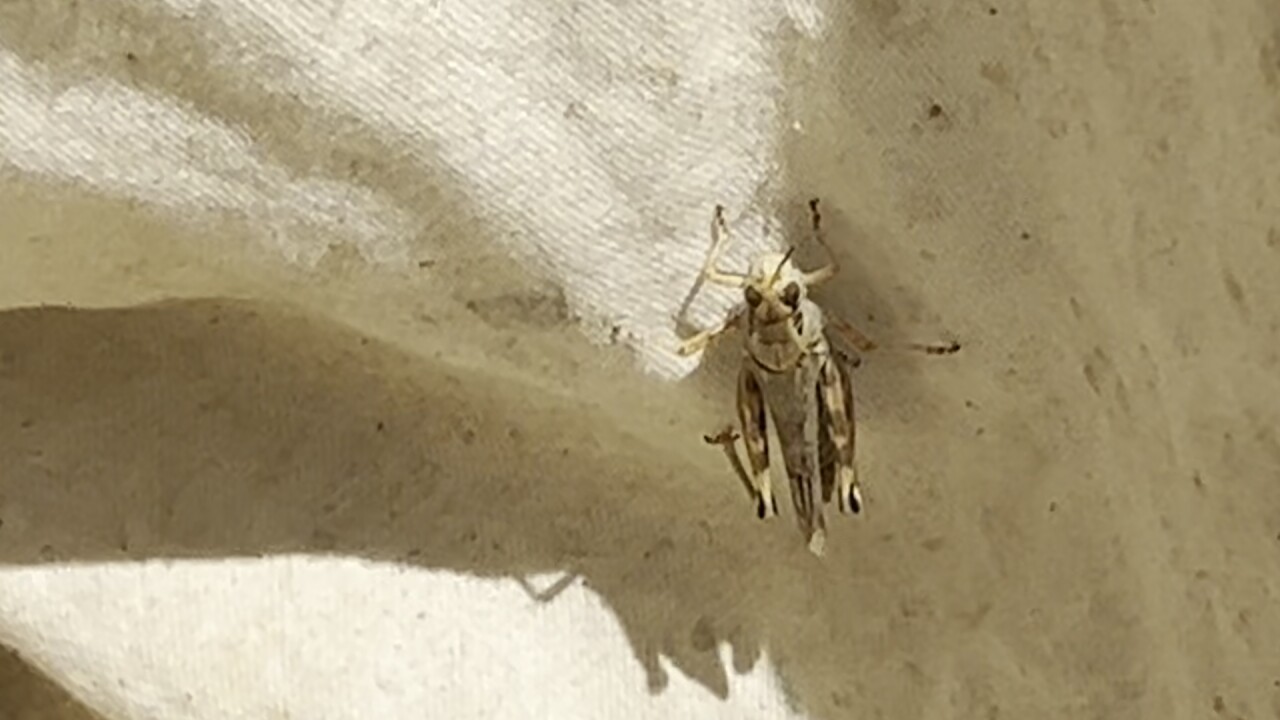A walk just about anywhere on Steve Gnerer’s Musselshell County ranch sends grasshoppers jumping in every direction.
“It’s very frustrating,” Gnerer says.
He had started the growing season with a lot of optimism, but that has long since faded. Grasshoppers are to blame.
“Earlier this spring we were seeing signs of them. And then you could see the little itty-bittys hatching left and right and you knew they were going to get bigger and hungrier. And so it wasn’t a good sign,” Gnerer says. “You couldn’t hardly walk without almost being nauseated by how much were moving on the front of your feet.”
It’s a cycle that USDA State Plant Heath Director Gary Adams says the state of Montana has been in for the past several years.
A map of the eastern part of the state, including the area near Gnerer’s ranch, is dotted in red showing grasshopper counts of more than 15 per square yard, which is considered an outbreak.
Adams says it takes a lot less than that to do a lot of damage.
“We have said that eight grasshoppers per yard essentially can compete with a cow-calf pair that eats about the same amount. So, you take those eight grasshoppers over an extended area in Montana and they can eat an awful lot of vegetation,” Adams says.

There are about 400 species of grasshoppers in the western states, but only a small number of those species are considered economically damaging to crops and rangeland.
The hungry hoppers have taken a toll on Gnerer’s operation, where wheat has been picked clean.
“Just see how much is laying on the ground? See all the wheat heads down on the ground? They just chop off it and leave,” he says.
Gnerer says the hoppers have essentially eaten all the goodness from the field, and that has left him with some difficult choices.
“You either lease more ground to pasture your cows or supply hay for them or you cull back. Which is what we did is downside the herd a bunch just to be able to keep enough to get through to the next year,” he says.

The USDA does offer education outreach through its Animal and Plant Health Inspection Service (APHIS).
APHIS treated about 300,000 acres in Montana this July, which protects a total of about 600,000 acres.
And while it’s too late for this year, a warm, dry fall could make next year a challenge as well because that is when the grasshoppers lay their eggs.
“If you wait until they are flying like they are now, it’s really too late to do anything about them this year—so start talking now about next year,” says Adams.
It’s recommended that ranchers who want to be part of the APHIS program next year should contact the USDA this winter.

Gnerer says he’s hoping for the best next year, but anyone who has been around farming and ranching can tell you—there are no guarantees.
“It’s disheartening but it is what it is,” he says.



